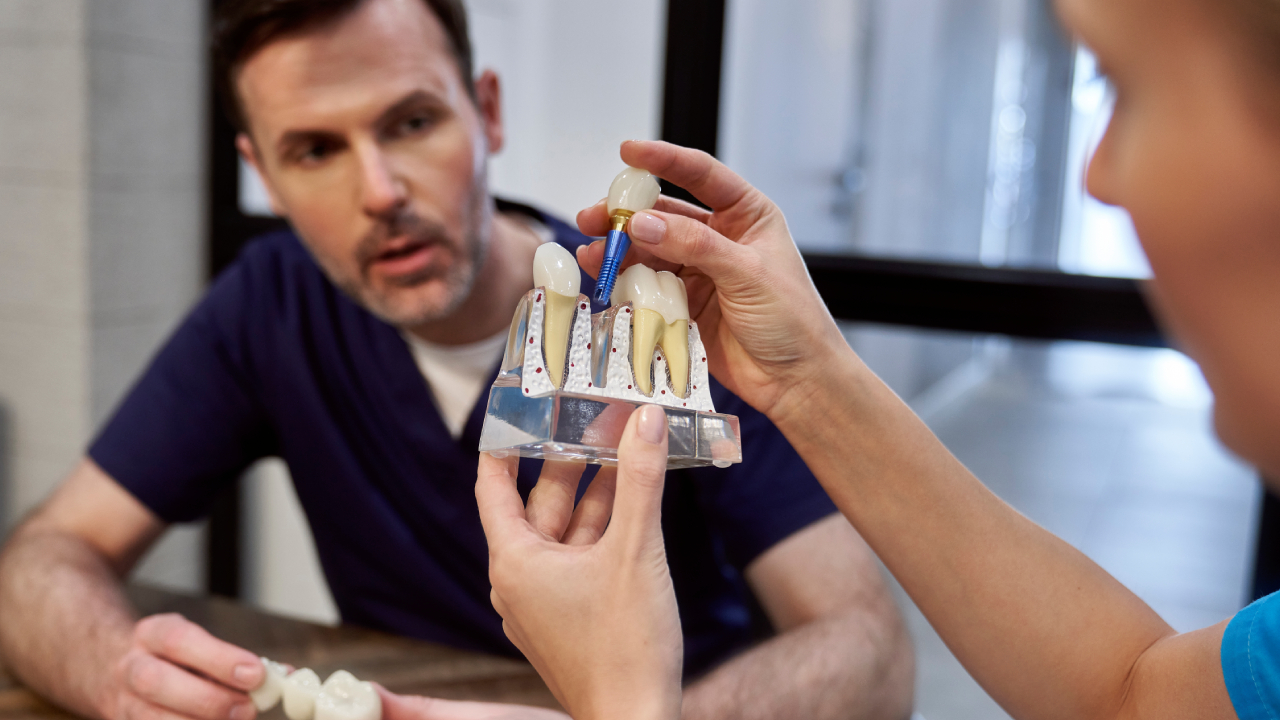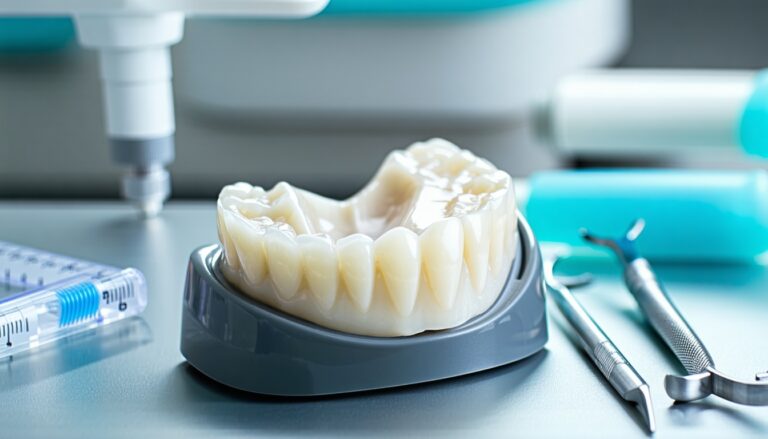When you are missing one or more teeth, finding a restoration that balances functionality, comfort, and aesthetics can be a big decision. One popular solution you might consider is dental bridge placement. By literally bridging the gap left by missing teeth, bridges can restore your smile and help you maintain better oral health overall. At Reimels Dentistry, we understand that you want a treatment plan tailored to your unique needs, and we are dedicated to offering exceptional restorative and cosmetic care. In this article, you will learn how dental bridges work, how they compare to other options such as implants, and what steps you can take to keep your new restoration in top shape.
Understanding dental bridge placement
Dental bridge placement refers to the process of filling the empty space in your mouth with a bridge that includes artificial teeth (pontics) anchored to adjacent teeth or, in some cases, to dental implants. This treatment can help reestablish normal chewing and speaking habits, enhance your smile, and prevent your neighboring teeth from drifting out of position. According to the Cleveland Clinic, bridges can replace anywhere from one to four consecutive missing teeth, making them a versatile solution for many patients.
Why missing teeth affect oral health
When you lose a tooth, the surrounding teeth can tilt or shift toward the open space. Over time, this misalignment may lead to bite problems, gum issues, and even further tooth loss. Additionally, losing teeth can cause bone deterioration in your jaw, impacting your facial structure and natural smile. A well-placed bridge secures your natural teeth into a stable position, distributing biting forces more evenly. This balance prevents complications that can arise from untreated tooth loss, such as difficulties chewing or speaking.
How the placement process works
- Assessment and preparation:
- Your dentist will examine your teeth, gums, and jaw to determine if a dental bridge is appropriate for you.
- They might take digital xray imaging or 3d cone beam imaging to assess bone density and tooth alignment.
- If there is a need for additional structural support, you may also explore a bone grafting ridge preservation procedure.
- Tooth preparation and impressions:
- In a traditional bridge, your dentist may shape the neighboring teeth to accommodate crowns that will act as anchors (abutment teeth).
- Impressions are then taken to create a custom-fit bridge.
- Temporary restoration:
- While waiting for the final restoration, a temporary bridge protects the prepared teeth or implants.
- Final fitting:
- Your permanent bridge is placed and adjusted to ensure proper bite alignment and comfort.
- The dentist will check for a snug fit around your gums to minimize the risk of bacterial buildup and future decay.
After the bridge is placed, you will need to attend follow-up appointments to confirm that everything has healed well. Many patients pair these visits with a routine dental checkup, ensuring their oral health is on the right track.
Recognizing different bridge types
There are various approaches to placing a bridge, each with specific advantages. Understanding the differences will help you choose an option suited to your oral health circumstances. Materials used can include metal, porcelain fused to metal, all-ceramic, or hybrid varieties. According to Taylorview Dental, the four most common types of dental bridges are traditional, cantilever, Maryland, and implant-supported bridges.
Traditional bridges
A traditional bridge uses two or more crowns placed over anchor teeth on each side of the space. The pontic (the false tooth or teeth) is firmly attached to these crowns. This style is durable and commonly used to restore molars that endure significant chewing pressure.
- Pros:
- Effective for restoring back teeth
- Long-standing success rate
- Suitable for multiple missing teeth in a row
- Cons:
- Requires shaping of the adjacent teeth
- Relies heavily on the health of anchor teeth
Cantilever bridges
With cantilever bridges, the pontic is anchored by only one tooth. This setup is often used for front teeth that do not endure as much bite force. Because there is only one anchor tooth, the stresses can be uneven, which makes this bridge less common for back teeth.
- Pros:
- Minimally invasive
- Useful when only one adjacent tooth is available
- Cons:
- Not suitable for high chewing force areas
- Higher risk of stress on the single anchor tooth
Maryland bridges
Also called resin-bonded bridges, Maryland bridges use a metal or porcelain framework bonded to the backs of the supporting teeth. This design preserves more of your natural tooth structure compared to traditional bridges because the supporting teeth require minimal reshaping.
- Pros:
- Minimally invasive
- Good for front teeth replacement
- Cons:
- Less durable bonding method
- Not recommended for areas with strong chewing forces
Implant-supported bridges
Instead of relying on natural teeth for support, implant-supported bridges use dental implants surgically placed in the jawbone. This method provides excellent stability and feels very much like natural teeth.
- Pros:
- No need to modify nearby healthy teeth
- Often last longer than other bridge types
- Help preserve bone density
- Cons:
- Requires adequate bone volume
- Longer treatment timeline
- Typically higher cost
Below is a quick comparison table to summarize these four major bridge types:
| Bridge Type | Anchor Method | Ideal Use | Key Advantage | Primary Consideration |
|---|---|---|---|---|
| Traditional | Crowns over two anchor teeth | Replacing up to four consecutive teeth | Durability | Requires shaping healthy teeth |
| Cantilever | Crown over one adjacent tooth | Front teeth with lighter chewing load | Minimally invasive | Places added stress on single supporting tooth |
| Maryland | Bonded metal or porcelain framework | Front teeth replacement | Preserves tooth structure | Weaker bond under high chewing forces |
| Implant-supported | Dental implants in jawbone | Multiple missing teeth, stable anchor | Most natural feel | Longer timeline, adequate jawbone needed, higher cost |
Enjoying the oral health benefits
Properly done, a dental bridge can do more than simply fill a gap in your smile. It can have a profound impact on everyday functionalities, from chewing to clear speech, while protecting your long-term oral health.
Restoring function and comfort
When you are missing teeth, chewing certain foods can become difficult. A well-fitted dental bridge gives you the freedom to enjoy a wide range of foods again without discomfort. Additionally, a correctly placed bridge can improve speech clarity. Gaps, especially in your front teeth, sometimes affect the production of certain sounds. Replacing those teeth helps restore your ability to speak with confidence.
Promoting alignment and stability
Shifting teeth can easily derail your bite alignment. By securing a stable restoration, you prevent neighboring teeth from drifting into the empty space. This proactive step saves you from further complications such as uneven wear or damage to other teeth. In many cases, a bridge helps distribute chewing forces equally, taking strain off specific areas of your mouth.
Preserving natural facial structure
Missing teeth may lead to a sunken facial appearance due to lack of support for your cheeks and lips. Filling that gap with a bridge that matches your natural tooth shape can help preserve your facial symmetry. Should you need a more comprehensive approach to maintaining facial structure, Reimels Dentistry can discuss additional options, including bone grafting ridge preservation.
Working together with preventive care
Bridge longevity also depends on preventive measures. Regular professional teeth cleaning and timely fluoride treatment give your gums added protection against bacteria, while an oral cancer screening helps detect other issues early. By staying alert to changes in your mouth, you can catch potential problems before they escalate.
Maintaining your bridge for longevity
Studies from the Cleveland Clinic suggest that the average lifespan of a dental bridge can range from five to 15 years, with some bridges lasting even longer. Proper at-home care and regular dental appointments play an integral role in ensuring you get the most out of your prosthetic.
Developing good oral hygiene
A dental bridge requires just as much attention as your natural teeth do. Since the pontic sits close to your gum tissue, plaque and food debris can be trapped if not cleaned carefully. Incorporate the following tips into your daily routine:
- Brush at least twice a day with a soft-bristled brush, angled toward the gumline.
- Floss once a day, using a threader to navigate underneath the bridge pontic.
- Rinse with an antibacterial mouthwash to reduce bacteria along the gumline.
If you are uncertain about the finer details of cleaning around your new restoration, your dental team can provide personalized instructions. With thorough hygiene practices, you reduce the risk of decay beneath the crowns that anchor your bridge.
Scheduling follow-up visits
Whether you have received a conventional or implant-supported bridge, regular checkups help ensure it remains securely in place. During these visits, your dentist can also examine your abutment teeth to catch any signs of decay or gum disease. Early intervention goes a long way toward prolonging the life of your dental bridge.
Adding specialty services
If you have underlying gum problems or advanced periodontal needs, consider adding a gum disease treatment or periodontal maintenance cleaning to your plan. It is vital to address gum issues quickly, as healthy gums provide a strong foundation for both natural and prosthetic teeth. For anxious or nervous patients, sedation dentistry service options—such as nitrous oxide sedation or oral sedation—can help you keep your appointments stress-free.
Comparing bridges with implants
Before committing to any restorative approach, it is important to explore the alternatives. Dental bridges and dental implants are both excellent ways of replacing missing teeth, but each offers different benefits and drawbacks.
Longevity and stability
Dental implants can often last decades when placed correctly and maintained well, thanks to their fusion with your jawbone. Bridges typically last 5 to 15 years, although they also can remain functional for longer with diligent care. If you prioritize a treatment that might never need replacement, implants warrant serious consideration.
Speed of treatment
A key advantage of dental bridge placement is the faster completion process. Implant treatments may take several months, especially if you require bone grafts or a healing period before the final crown is attached. A standard dental bridge can often be placed in just a few weeks, making it a more time-efficient solution for many patients.
Cost considerations
The cost of dental implants can be higher than a standard bridge. According to different sources, implant-supported bridges might also be costly because you are paying for the implants, the abutments, and the final prosthesis. Meanwhile, the typical price for a bridge ranges from $500 to $1,200 per tooth, depending on materials and your location. If you are concerned about affordability, a conventional bridge could be more accessible. At Reimels Dentistry, we aim for transparent dental pricing, and our insurance friendly dental practice is happy to walk you through any financial questions.
Impact on healthy teeth
Traditional bridges require reshaping adjacent teeth. Implants, on the other hand, rely on a metal post implanted into your jaw. If your adjoining teeth are strong and decay-free, an implant preserves those healthy teeth better. Alternatively, if your adjacent teeth already have large fillings or need dental crown placement, a traditional bridge can be an effective dual solution—restoring the anchor teeth as well as replacing the missing tooth.
Choosing Reimels Dentistry confidently
When you decide to pursue a dental bridge or any other restorative or cosmetic treatment, the team you work with matters. At Reimels Dentistry, our practice centers on your comfort, safety, and the overall effectiveness of your results. We prioritize individualized care plans that focus on your unique situation, ensuring that you or your loved one receives the support necessary for long-term dental health.
Tailored treatments to fit your needs
We understand that missing teeth can result from various causes, including accidents, decay, or genetic predispositions. Our approach involves listening closely to your concerns, evaluating your oral health thoroughly, and creating a plan that feels right for you. This may mean focusing not only on your bridge but also addressing any other treatments, such as a tooth extraction if irreparable damage is present, or a root canal therapy for a severely infected tooth.
Emphasis on advanced care
Our commitment to advanced care means we employ modern tools and techniques. From intraoral camera examination that helps us detect small issues early, to sedation options that calm your nerves, we keep your entire experience in mind. If you are looking for more extensive cosmetic transformations, we might recommend porcelain veneer placement or a complete cosmetic smile makeover to align with your aesthetic goals.
Comfortable environment for every visit
Beyond the technical expertise, a supportive environment is key to helping you feel comfortable during your bridge placement and subsequent appointments. Our staff members are trained to address any anxieties you might have, from mild nervousness to more severe dental phobias. Should you need additional support, our medication management for dental anxiety can make a huge difference in your overall comfort.
Long-term relationships and follow-up
Choosing Reimels Dentistry is about more than a single procedure. We value ongoing relationships that help you maintain excellent oral health year after year. In addition to bridges, we offer dental membership plan options for individuals without dental insurance, encouraging regular checkups and cleanings so your investment in a new restoration remains protected.
Frequently asked questions
Below you will find answers to five common questions about dental bridge placement. If you have additional inquiries, our team is always ready to help.
1. How long does a dental bridge last?
A dental bridge can last five to 15 years on average, according to the Cleveland Clinic. By maintaining excellent oral hygiene, scheduling regular dental visits, and avoiding harmful habits like chewing ice, you can extend its lifespan beyond that range.
2. Is the procedure painful?
Most patients experience minimal discomfort during dental bridge placement, especially when local anesthesia or sedation methods are used. You may feel some soreness afterward, but over-the-counter pain relievers are typically enough to manage any mild pain. Our sedation dentistry service can also alleviate anxiety or discomfort.
3. How do I care for my bridge at home?
Caring for your bridge is much like caring for your natural teeth. Brush twice daily, floss once a day (using a floss threader to reach under the pontic), and consider an antibacterial mouthwash. Schedule a professional teeth cleaning twice a year to keep plaque and tartar at bay, focusing on tough-to-reach areas.
4. Can I replace my existing bridge with an implant-supported one?
Yes. If you have sufficient bone density, it is often possible to upgrade from a conventional bridge to an implant-supported bridge later on. Your dentist will examine your jaw to determine if you are a good candidate for implants. The additional stability of an implant-supported bridge can be particularly appealing if you want a more permanent solution.
5. Will a bridge look and feel like my natural teeth?
A well-made bridge is customized for your bite, color, and shape. In fact, people often cannot tell you have a dental prosthetic at all. You may need a brief adjustment period before the bridge feels completely natural, but many patients say that it quickly becomes unnoticeable in their daily routine.
Dental bridge placement is an effective way to rebuild your smile and restore normal chewing and speech capabilities. From understanding the different types of bridges to caring for your new restoration, you can make informed choices that prioritize your comfort and oral health. If you are ready to take the next step, consider Reimels Dentistry for your preventive, restorative, and cosmetic dental needs. With a commitment to tailored treatment, advanced technology, and a caring environment, we strive to help you achieve the smile you deserve. Feel free to reach out if you have any questions or would like to schedule a consultation. We look forward to helping you move confidently toward a fully restored and healthy smile.








